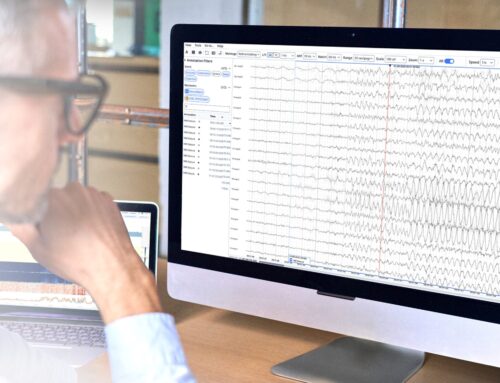SAFE-MCS Will Examine the Impact of the Early Bird Bleed Monitoring System on Reducing Bleeding Complications in Patients Undergoing High Risk PCI with Mechanical Circulatory Support
Houston-based medical device company, Saranas, Inc., has announced initiation and first patient enrollment in SAFE-MCS, a multi-center, single arm, open-label clinical trial evaluating the safety of complex high-risk percutaneous coronary intervention (PCI) using mechanical circulatory support (MCS) and surveillance with the company’s patented Early Bird Bleed Monitoring System. The first patient was enrolled at Atlantic Health System’s Morristown Medical Center in Morristown, NJ, by Dr. Philippe Généreux, Co-Director of the Structural Heart Program, and Dr. Dimitrios Karmpaliotis, Medical Director of the Cardiovascular Rescue and Recovery Program and the Advanced Coronary Therapeutics and Chronic Total Occlusions Program, at Morristown Medical Center.
“We are excited to participate in SAFE-MCS as this trial aims to build the clinical evidence and key learnings on integrating early bleed detection as a viable solution to enhance safety for patients undergoing complex high-risk PCI with MCS,” said Dr. Généreux, co-principal investigator of SAFE-MCS.
SAFE-MCS will enroll up to 265 patients across multiple centers in the United States. The primary endpoint of the study is incidence of access-site related BARC (Bleeding Academic Research Consortium) type III or V bleeding. Patients undergoing complex high-risk PCI with MCS via Impella and transfemoral arterial approach will be enrolled as study participants. The Early Bird Bleed Monitoring System will be used in the ipsilateral femoral vein to monitor bleeding events after MCS removal.
“As the field of minimally-invasive, catheter-based procedures continues to advance, patient safety is paramount,” said Dr. Babar Basir, Director of Acute Mechanical Circulatory Support at Henry Ford Health System and co-principal investigator of SAFE-MCS. “This study will collect comprehensive procedural data in patients undergoing PCI with MCS. The data will undergo independent adjudication of clinical events to provide meaningful guidance on how real-time bleed monitoring can improve clinical outcomes.”
Approximately one in every five patients will experience a bleeding complication during large-bore endovascular procedures such as transcatheter aortic valve replacement (TAVR), endovascular aneurysm repair (EVAR), and percutaneous MCS1. The average cost of a single bleeding complication incident across these large-bore procedures is approximately $18,000 with an estimated $729 million cost on the healthcare system. The Saranas Early Bird Bleed Monitoring System is the first and only FDA-approved device for real-time monitoring of endovascular bleed complications.
Saranas is partnering with the Cardiovascular Research Foundation (CRF) Clinical Trials Center to assess cost savings associated with the Early Bird in the SAFE-MCS trial. “As health systems are highly sensitive to the burden of incremental costs from procedural complications, it is more important than ever to quantify the economic value of innovative technologies like early bleed detection,” said Dr. David Cohen, Director of Clinical and Outcomes Research at CRF.
“SAFE-MCS is the first prospective trial focused exclusively on the impact of integrating bleed monitoring in large-bore access for high-risk protected PCI patients,” said Saranas President and CEO James Reinstein. “Saranas is committed to building objective evidence to support the clinical utility of the Early Bird device. We are pleased to support the SAFE-MCS study, and we wish to thank the investigators for their efforts to commence the trial.”
To learn more about SAFE-MCS, please visit the study record on clinicaltrials.gov.
About the Early Bird Bleed Monitoring System
The Early Bird Bleed Monitoring System includes a bleed detection array with integrated electrodes in a fully functional vascular access sheath. The Early Bird is designed to measure changes in bioimpedance to detect and monitor bleeding from vessel injury during endovascular procedures, such as a transcatheter aortic valve replacement (TAVR), hemodynamic support device placement, or other complex endovascular interventions, where the femoral artery or vein is used to obtain vascular access. Visual and audible indicators on the Early Bird notify the clinician of the onset and progression of bleeding events.
- Redfors B et al. Mortality, length of stay, and cost implications of procedural bleeding after percutaneous interventions using large-bore catheters. JAMA Cardiol. 2017 Jul 1;2(7):798-802.












